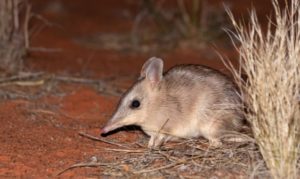Several recent news stories highlight the importance of controlling feral animals, like rabbits, cats and foxes, in order to restore native ecosystems.
Scientists have shown that invasive species are responsible for hundreds of species becoming extinct, and have concluded that removing invasive species from islands would benefit nearly 10% of the most endangered species on earth. For more information see the Discover Wildlife story. As an example of the role of rabbits in environmental destruction and the risk they pose to native biodiversity see the paper by Saunders et.al. on the ecosystem impacts of feral rabbits on Macquarie Island in Anthropocene.
Recent evidence of the success of feral eradication programs in assisting environmental recovery comes from the Flinders Ranges in South Australia. Ferals were controlled prior to the re-introduction of quolls and possums in 2014, and a recent survey has found that both species are now breeding successfully, with 29 new quolls and 8 possums born into the population. For more information see the ABC News story. Rabbit Free Australia has been pleased to play a small part in assisting FAME (the Foundation for Australia’s Most Endangered) and their partners in this work.
The success of programs such as that auger well for a newly established reserve on the Sturt National Park, in NSW. One of the largest rabbit-free areas in Australia, the 40 sq km sanctuary will enable the recovery of native species and the re-introduction of others, including two species of bandicoot. For more information see the UNSW Newsroom article.

Western Barred Bandicoots will be re-introduced to the Sturt National Park sanctuary. Photo: UNSW
